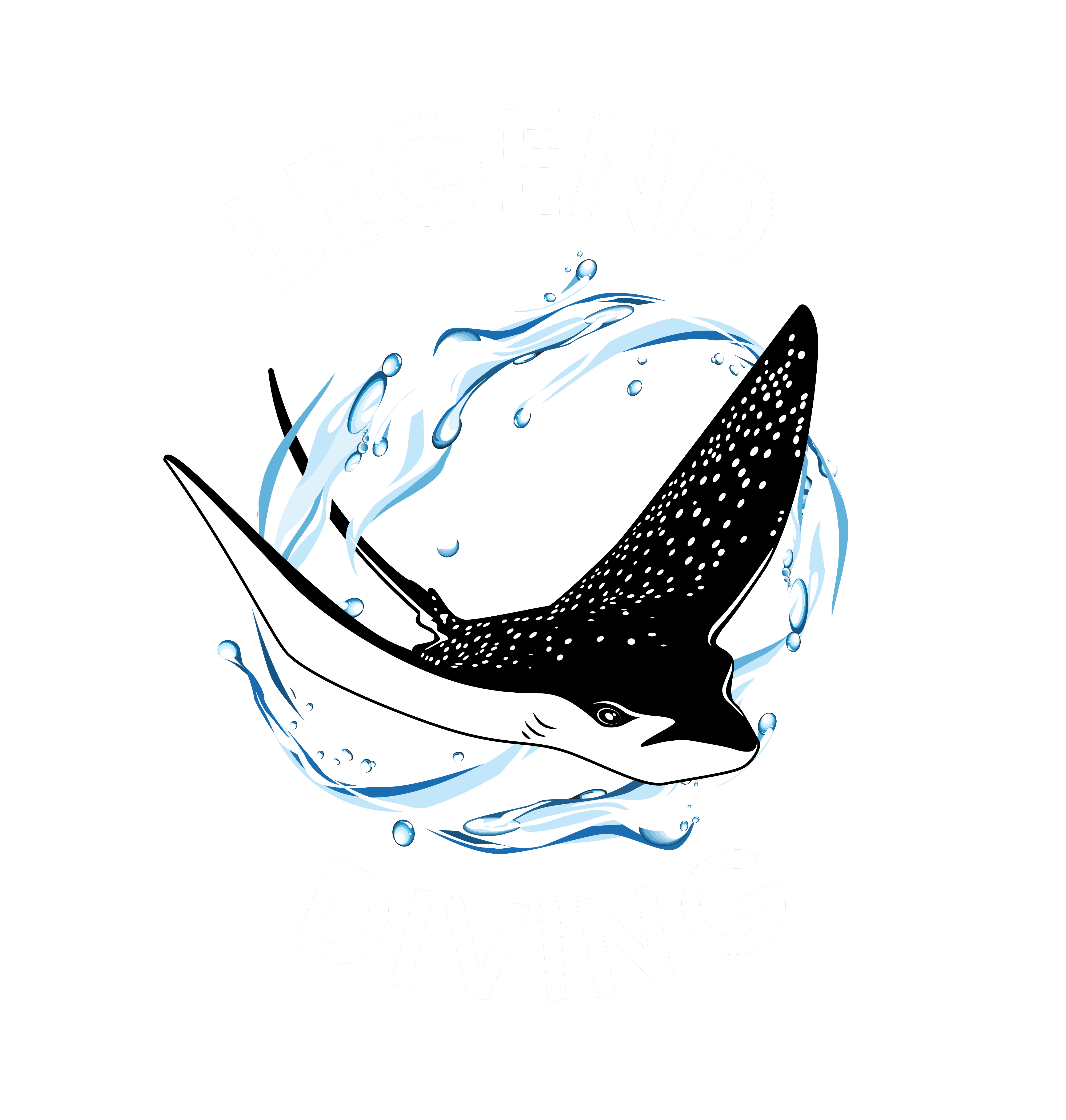Fun Dives
For those already in Nusa Penida Dive in the Richest Area of Marine Biodiversity in the World
Fun Dives
For those already in Nusa Penida Dive in the Richest Area of Marine Biodiversity in the World
IDR 845,000
IDR 845,000
Year-round daily trips
ONBOARD
Emergency Oxygen,
Life Vests, First Aid Kit
ONBOARD
Emergency Oxygen,
Life Vests, First Aid Kit
MEALS & DRINKS
Lunch, Free Flow Water,
Tea, Coffee, Fruit
MEALS & DRINKS
Lunch, Free Flow Water,
Tea, Coffee, Fruit
OUR SERVICE
Small group of 4 divers
Professional Instructors
OUR SERVICE
Small group of 4 divers
Professional Instructors
RENTAL
Full Set Of Equipment
RENTAL
Full Set Of Equipment
One Day Trips from Bali
Planning a trip to Bali but cannot spare a night in Penida? No worries, we got you covered with our day-trip excursion!
One Day Trips from Bali
Planning a trip to Bali but cannot spare a night in Penida? No worries, we got you covered with our day-trip excursion!
IDR 2,110,000*
IDR 2,110,000*

SANUR HARBOUR
6.00 am

SANUR HARBOUR
6.00 am

FERRY/DROP OFF SHOP
6.30 am – 7.45 am

FERRY/DROP OFF SHOP
6.30 am – 7.45 am

DIVES 1 & 2, LUNCH, (DIVE 3 OPT)
8:30am – 12:30 pm (2pm)

DIVES 1 & 2, LUNCH,
(DIVE 3 OPT)
8:30am – 12:30 pm (2pm)

FERRY 50 MIN
5.00 pm – 5.45 pm

FERRY 50 MIN
5.00 pm – 5.45 pm

SANUR HARBOR
6.00 pm

SANUR HARBOR
6.00 pm
*incl: 2 fun dives & round trip transportation
from sanur to our shop

Dive into Adventure
Best Time of The Year to Go Diving on Nusa Penida
The Marine Sanctuary of Nusa Penida Island provides unique diving experiences hard to replicate elsewhere. Marine creatures in their thousands occupy the depths and calls the pristine coral reefs home. Nusa Penida is between Lombok and Bali with deep channels in between the 2 islands.
If drift is not your thing, then there are many other locations that provide a calmer diving experience. Our team comprises highly skilled dive professionals, and we are sure to meet your diving expectations. We will guide you through drift diving protocols with safety being our number 1 priority. Your satisfaction is top of mind, always! Having knowledge of the surroundings is helpful in finding the Manta Ray and Mola-Mola. We have that knowledge, and more. Each dive or snorkeling site is between 10-30 minutes away and includes breathtaking Island views.
Nusa Penida Island has great diving all year round: the conditions are favorable during each of the 2 seasons. The high season, or dry season, lasts from April – October. Mola-Mola are most commonly seen in the dry season, especially between the months of July and October. These are the winter months in Indonesia and with that in mind, the water can get chilly. In fact, we experience temperatures as cold as 16°C. We highly recommend using a 5mm wetsuit at a minimum. The rainy season, or low season, lasts from November – March. Tropical rains occur for a few hours a day, but sunny skies always follow. The peak of the rainy season is in January and February. During these summer months, we can expect water temperatures of 26-28°C, generally. Lucky for us, we can find the Manta Ray and other marine life at any time of the year.

Dive into Adventure
Best Time of The Year to Go Diving on Nusa Penida
The Marine Sanctuary of Nusa Penida Island provides unique diving experiences hard to replicate elsewhere. Marine creatures in their thousands occupy the depths and calls the pristine coral reefs home. Nusa Penida is between Lombok and Bali with deep channels in between the 2 islands.
If drift is not your thing, then there are many other locations that provide a calmer diving experience. Our team comprises highly skilled dive professionals, and we are sure to meet your diving expectations. We will guide you through drift diving protocols with safety being our number 1 priority. Your satisfaction is top of mind, always! Having knowledge of the surroundings is helpful in finding the Manta Ray and Mola-Mola. We have that knowledge, and more. Each dive or snorkeling site is between 10-30 minutes away and includes breathtaking Island views.
Nusa Penida Island has great diving all year round: the conditions are favorable during each of the 2 seasons. The high season, or dry season, lasts from April – October. Mola-Mola are most commonly seen in the dry season, especially between the months of July and October. These are the winter months in Indonesia and with that in mind, the water can get chilly. In fact, we experience temperatures as cold as 16°C. We highly recommend using a 5mm wetsuit at a minimum. The rainy season, or low season, lasts from November – March. Tropical rains occur for a few hours a day, but sunny skies always follow. The peak of the rainy season is in January and February. During these summer months, we can expect water temperatures of 26-28°C, generally. Lucky for us, we can find the Manta Ray and other marine life at any time of the year.

Nusa Penida’s Underwater World
Penida Dive Adventure & Marine Life
Diving on Nusa Penida will provide you with the opportunity to encounter a wide variety of rare marine life. Because of the strong surrounding currents, vast amounts of nutrients are present in our waters, creating an underwater spectacle.
MOLA MOLA
Scuba Divers who want a glimpse of the mysterious Mola mola should visit Nusa Penida on their next diving holiday.
Fortunately, the Mola mola call these tropical waters home and can be found at many of our dive sites. Mola alexandrini, also known as the giant sunfish, are the heaviest bony fish on earth, weighing up to 2744 kgs. They spend most of their time at depths unreachable by recreational divers, however, they do come up to shallow waters. When they venture up, they do so in order to get cleaned at cleaning stations. Among others, the Longfin bannerfish will clean the Mola from its parasites. Crystal Bay and Blue Corner are 2 of the dive sites around here that have various cleaning stations. It is no wonder that everyone who visits the Island wants to go diving there.
MANTA RAYS
The Manta ray of Nusa Penida are the real locals and will welcome you with unique dances as we descend. We see them all year round at the famous Manta Bay and Manta Point dive sites. Two different species of Manta ray are known to science and Nusa Penida is home to the Reef Manta ray. These majestic creatures are gentle giants, measuring up to 5.5 meters wide. A visit to the Mantas is our most popular request and we oblige with enthusiasm, every time.
OTHER RESIDENTS
The Manta rays and Mola mola aren’t the only creatures to roam the waters of Nusa Penida. To name a few, Hawksbill and Green sea turtles are common at most of our dive sites around the island. They are as cool as can be and are truly a sight to be marveled at. We can enjoy Marble ray sightings in deeper water as we watch them move their bodies in mysterious ways. Additionally, at Manta Point, we can find dozens of Sting rays on the seafloor. Don’t worry, they won’t attack or try to sting you unless provoked.
The abundance of reef fish on the Island is hard to encapsulate in words. There are literally thousands of them at each of our dive sites! Toyapakeh, Mangrove Point, and SD Point are a few of the sites that resemble life in an aquarium, but better. We can see schools of Drummer fish, Giant trevally, Barracuda, Tuna, and much more. You will need to come and see for yourself to get a proper idea of what we are talking about.
CREATURES TO BE MINDFUL OF
It is important that you are aware of some potential hazards that are present underwater. Moray eels are famous for hiding in holes that are not always easy to see. We should always keep our hands to ourselves so that we don’t have an unpleasant encounter with one of them. On the same note, Scorpionfish and Stonefish are masters of camouflage and are highly venomous. Make sure to not touch or aggravate them if you come across one.

Nusa Penida’s Underwater World
Penida Dive Adventure & Marine Life
Diving on Nusa Penida will provide you with the opportunity to encounter a wide variety of rare marine life. Because of the strong surrounding currents, vast amounts of nutrients are present in our waters, thus creating an underwater spectacle.
MOLA MOLA
Scuba Divers who want a glimpse of the mysterious Mola-Mola should visit Nusa Penida on their next diving holiday.
Fortunately, the Mola mola call these tropical waters home and can be found at many of our dive sites. Mola alexandrini, also known as the giant sunfish, are the heaviest bony fish on earth, weighing up to 2744 kgs. They spend most of their time at depths unreachable by recreational divers, however, they do come up to shallow waters. When they venture up, they do so in order to get cleaned at cleaning stations. Among others, the Longfin bannerfish will clean the Mola from its parasites. Crystal Bay and Blue Corner are 2 of the dive sites around here that have various cleaning stations. It is no wonder that everyone who visits the Island wants to go diving there.
MANTA RAYS
The Manta ray of Nusa Penida are the real locals and will welcome you with unique dances as we descend. We see them all year round at the famous Manta Bay and Manta Point dive sites. Two different species of Manta ray are known to science and Nusa Penida is home to the Reef Manta ray. These majestic creatures are gentle giants, measuring up to 5.5 meters wide. A visit to the Mantas is our most popular request and we oblige with enthusiasm, every time.
OTHER RESIDENTS
The Manta rays and Mola mola aren’t the only creatures to roam the waters of Nusa Penida. To name a few, Hawksbill and Green sea turtles are common at most of our dive sites around the island. They are as cool as can be and are truly a sight to be marveled at. We can enjoy Marble ray sightings in deeper water as we watch them move their bodies in mysterious ways. Additionally, at Manta Point, we can find dozens of Sting rays on the seafloor. Don’t worry, they won’t attack or try to sting you unless provoked.
The abundance of reef fish on the Island is hard to encapsulate in words. There are literally thousands of them at each of our dive sites! Toyapakeh, Mangrove Point, and SD Point are a few of the sites that resemble life in an aquarium, but better. We can see schools of Drummer fish, Giant trevally, Barracuda, Tuna, and much more. You will need to come and see for yourself to get a proper idea of what we are talking about.
CREATURES TO BE MINDFUL OF
It is important that you are aware of some potential hazards that are present underwater. Moray eels are famous for hiding in holes that are not always easy to see. We should always keep our hands to ourselves so that we don’t have an unpleasant encounter with one of them. On the same note, Scorpionfish and Stonefish are masters of camouflage and are highly venomous. Make sure to not touch or aggravate them if you come across one.
Useful Tips to Dive Nusa Penida
Penida Dive Adventure & Sea Conditions
Before each dive, one of our team members will provide a dive site briefing to all guests involved. In that case, it’s important to pay attention as they will provide information that is important to each specific site. Even if you have been drift diving before, we highly recommend listening to our dive professionals. They know the surroundings and conditions well and will explain entry/exit techniques, equipment recommendations, and facts about the site.
No matter our diving level, it is always important to remember and go back to the basics. Sometimes, we forget the simple things and that can put us in dangerous situations. Remember to check your dive computer for depth limitations and no-decompression limits. Pay attention to your air consumption and communicate with your dive leader. Be prepared for an unplanned emergency by staying close with your buddy. All the above-mentioned protocols are necessary when drift diving as currents have the tendency to change unpredictably.
When diving with us for the first time, we will introduce you to our equipment and how it’s put together. It is of importance that you’re aware of how the equipment works, and what to do in case of an emergency. Safety is our number 1 priority, and it should be the same for all divers. Make sure you streamline your gear to prevent drag on the ocean floor or hose entanglement. Furthermore, you should know how your buddy’s equipment works and vice versa. Together with your buddy, plan communication techniques and safety procedures. All of this will prepare you for a safe and commutable dive.
No matter how strong you are, the current is always stronger! Swimming against it unnecessarily will just waste the air in your tank. Staying close to the reef will reduce the effect of current, but watch your buoyancy! We wouldn’t want to be crashing into corals, now would we? Think of yourself as riding the current- have fun as you soar across the water! Make small nuanced adjustments in the water to avoid hazards. Use your fins to your advantage.
Oceanic currents are strong, much stronger than you and I, so it must be remembered to not fight the current. By swimming against the current for a period you will first become tired, and second, waste your air. If the current picks up and you get ahead of your group, then stay close to the reef. It is a well-known fact that if you are close to the reef, then the current is less strong. However, you need to maintain good buoyancy to avoid coral damage!
Diving with current is fun. In fact, it is like flying underwater. Monitor your body position and make minor adjustments when needed.
The potential for an unplanned emergency it ever-present. This is true in our daily lives as well as SCUBA diving. In the event of an emergency, the worst thing to do is panic. Remember to stay calm, stop, think, and then act. During the briefing, your guide will explain emergency procedures that need to be followed, in the event of one happening. Make your way to the surface according to your dive computer’s instructions, deploy your SMB, and resurface. Once you are back on the surface, then you can flag a boat down and get picked up.
When embarking on a drift dive, we start at one point and end at a different point. On this note, they will drop us off and pick us up with a dive boat. Many dive boats on the surface result in boat traffic, which can present potential hazards. Our team will always carry an SMB in order to flag boats and let them know divers are below. If you own an SMB, then please bring it with you.
During the safety stop, maintain your buoyancy and stay at the same level as your dive guide at all times. Please remember to keep your mask on and regulator in your mouth until we are back on board the boat.
Experiencing a down current whilst diving can be a stressful situation if you have never been through it, beforehand. Paying attention to the briefing will give you a better idea of how to deal with these specific conditions. If a strong current occurs at a site with a steep drop-off, then water moves either upwards or downwards. It is also possible that when two horizontal currents meet, then the water is deflected up or down.
If you find yourself in a down current, don’t panic! Pay attention to the bubbles flowing from your regulator and assess in which direction they are going. If the current is moving downwards, then swim horizontally, away from the area of the down current. Do this as opposed to trying to fight the current by swimming upward. Add small amounts of air into your BCD to help with a slow ascent out of the current. Once you are in a safe zone, dump the excess air out of your BCD in order to prevent an uncontrolled ascent.
As mentioned above, an upward current results from the same characteristics of a downward current. Follow similar procedures, but this time you will release air from your BCD instead of adding air. By releasing air, it will slow your ascent rate down.
During an unplanned ascent resulting from an upward current, remember to not hold your breath. Holding your breath on an ascent can lead to a lung-overexpansion injury. Swim horizontally away from the area of current and don’t swim straight downwards.
Overall, if you listen to the dive briefing and stay close to your dive guide, then you have nothing to worry about. Relax and enjoy the beauty of drifting along the currents of Nusa Penida Island.
Useful Tips to Dive Nusa Penida
Penida Dive Adventure & Sea Conditions
Before each dive, one of our team members will provide a dive site briefing to all guests involved. In that case, it’s important to pay attention as they will provide information that is important to each specific site. Even if you have been drift diving before, we highly recommend listening to our dive professionals. They know the surroundings and conditions, well and will explain entry/exit techniques, equipment recommendations, and facts about the site.
No matter our diving level, it is always important to remember and go back to the basics. Sometimes, we forget the simple things and that can put us in dangerous situations. Remember to check your dive computer for death limitations and no-decompression limits. Pay attention to your air consumption and communicate with your dive leader. Be prepared for an unplanned emergency by staying close with your buddy. All the above-mentioned protocols are necessary when drift diving as currents have the tendency to change, unpredictably.
When diving with us for the first time, we will introduce you to our equipment and how it’s put together. It is of importance that you’re aware of how the equipment works, and what to do in case of an emergency. Safety is our number 1 priority, and it should be the same for all divers. Make sure you streamline your gear to prevent drag on the ocean floor or hose entanglement. Furthermore, you should know how your buddy’s equipment works and vice versa. Together with your buddy, plan communication techniques and safety procedures. All of this will prepare you for a safe and commutable dive.
No matter how strong you are, the current is always stronger! Swimming against it unnecessarily will just waste the air in your tank. Staying close to the reef will reduce the effect of current, but watch your buoyancy! We wouldn’t want to be crashing into corals, now would we? Think of yourself as riding the current- have fun as you soar across the water! Make small nuanced adjustments in the water to avoid hazards. Use your fins to your advantage.
Oceanic currents are strong, much stronger than you and I, so it must be remembered to not fight the current. By swimming against the current for a period you will first become tired, and second, waste your air. If the current picks up and you get ahead of your group, then stay close to the reef. It is a well-known fact that if you are close to the reef, then the current is less strong. However, you need to maintain good buoyancy to avoid coral damage!
Diving with current is fun. In fact, it is like flying underwater. Monitor your body position and make minor adjustments when needed.
The reality of an unplanned emergency always exists. This is true in our daily lives as well as scuba diving. In the event of an emergency, the worst thing to do is panic. Remember to stay calm, stop, think, and then act. During the briefing, your guide will explain emergency procedures that need to be followed, in the event of one happening. Make your way to the surface according to your dive computers’ instructions, deploy your SMB, and resurface. Once you are back on the surface, then you can flag a boat down and get picked up.
When embarking on a drift dive, we start at one point and end at a different point. On this note, they will drop us off and pick us up with a dive boat. Many dive boats on the surface result in boat traffic, which can present potential hazards. Our team will always carry an SMB in order to flag boats and let them know divers are below. If you own an SMB, then please bring it with you.
During the safety stop, maintain your buoyancy and stay at the same level as your dive guide at all times. Please remember to keep your mask on and regulator in your mouth until we are back on board the boat.
Experiencing a down current whilst diving can be a stressful situation if you have never been through it, beforehand. Paying attention to the briefing will give you a better idea of how to deal with these specific conditions. If a strong current occurs at a site with a steep drop-off, then water moves either upwards or downwards. It is also possible that when two horizontal currents meet, then the water is deflected up or down.
If you find yourself in a down current situation, don’t panic! Pay attention to the bubbles flowing from your regulator and assess in which direction they are going. If the current is moving downwards, then swim horizontally, away from the area of the down current. Do this as opposed to trying to fight the current by swimming upward. Add small amounts of air into your BCD to help with a slow ascent out of the current. Once you are in a safe zone, dump the excess air out of your BCD in order to prevent an uncontrolled ascent.
As mentioned above, an upward current results from the same characteristics of a downward current. Follow similar procedures, but this time you will release air from your BCD instead of adding air. By releasing air, it will slow your ascent rate down.
During an unplanned ascent resulting from an upward current, remember to not hold your breath. Holding your breath on an accent can lead to a lung overexpansion injury. Swim horizontally away from the area of current and don’t swim straight downwards.
Overall, if you listen to the dive briefing and stay close to your dive guide, then you have nothing to worry about. Relax and enjoy the beauty of drifting along the currents of Nusa Penida Island.
Refresher Program
Haven’t Been Diving in a While?
Refresher Program
Haven’t Been Diving in a While?

Why It’s Needed and What to Expect?
Penida Refresher Program
Legend Diving Penida requires that you have been diving within a year of visiting us. Alternatively, if you haven’t been diving within a year but have more than 30 logged dives, then that is accepted. In the case that any, or both, of the above, aren’t met, then a Refresher will need to be done.
We will conduct a refresher in our onsite pool with a PADI Professional and includes a theory and skills review. In doing so, we can assess your level and ensure that you are comfortable and ready to go diving again. It is a quick, but a necessary program that will only last for around 1.5 hours, generally speaking.

Why It’s Needed and What to Expect?
Penida Dive Adventure
Legend Diving Penida requires that you have been diving within a year of visiting us. Alternatively, if you haven’t been diving within a year but have more than 30 logged dives, then that is accepted. In the case that any, or both, of the above, aren’t met, then a Refresher will need to be done.
We will conduct a refresher in our onsite pool with a PADI Professional and includes a theory and skills review. In doing so, we can assess your level and ensure that you are comfortable and ready to go diving again. It is a quick, but a necessary program that will only last for around 1.5 hours, generally speaking.

Diving Holidays with Legend Diving
Penida Dive Adventure, Our Operation
Come rain or shine, we go diving every day of the week. Our fast boats are ready and waiting to take you out for an unforgettable underwater adventure. The daily departure schedules vary based on the tides and sea conditions. Notably, we choose our daily dive sites with these same factors in mind.
Our team of dive professionals knows the Island well and will only take you to locations suitable to your level. We keep our diving groups small, with a maximum of 4 guests on the same level, per 1 dive guide.
Reaching our diving destination is an adventure on its own. Nusa Penida Island, along with its 2 sister islands, displays picture-perfect scenes to admire whilst we cruise by. Getting to each site will only take between 10-30 minutes, with Manta Point being the farthest. We equip our boats with life jackets, oxygen, first aid, drinking water, and food. Rest assured that we cover all bases and do so with an extra touch of magic.
We usually have 2-3 dive trips per day, 2 will be in the morning and the third in the afternoon. You will visit 2 different sites during the morning trip. If we have at least 2 guests interested in a third dive, we will then visit another. Legend Diving takes pride in the level of service that we offer to our valued guests. Meeting all of your expectations and keeping you safe are our top priorities. We have a team that is experienced and knows the underwater world of Nusa Penida, well. They have knowledge of where to go diving, in which conditions, and what we will find on each dive. Fish identification is important, and our team is trained in identifying the various species that call Nusa Penida home.

Diving Holidays with Legend Diving
Penida Dive Adventure, Our Operation
Come rain or shine, we go diving every day of the week. Our fast boats are ready and waiting to take you out for an unforgettable, underwater adventure. The daily departure schedules vary based on the tides and sea conditions. Notably, we choose our daily dive sites with these same factors in mind.
Our team of dive professionals knows the Island well and will only take you to locations suitable to your level. We keep our diving groups small, with a maximum of 4 guests on the same level, per 1 dive guide.
Reaching our diving destination is an adventure on its own. Nusa Penida Island, along with its 2 sister islands, displays picture-perfect scenes to admire whilst we cruise by. Getting to each site will only take between 10-30 minutes, with Manta Point being the farthest. We equip our boats with life jackets, oxygen, first aid, drinking water, and food. Rest assured that we cover all bases and do so with an extra touch of magic.
We usually have 2-3 dive trips per day, 2 will be in the morning and the third in the afternoon. You will visit 2 different sites during the morning trip. If we have at least 2 guests interested in a third dive, we will then visit another. Legend Diving takes pride in the level of service that we offer to our valued guests. Meeting all of your expectations and keeping you safe are our top priorities. We have a team that is experienced and knows the underwater world of Nusa Penida, well. They have knowledge of where to go diving, in which conditions, and what we will find on each dive. Fish identification is important, and our team is trained in identifying the various species that call Nusa Penida home.






